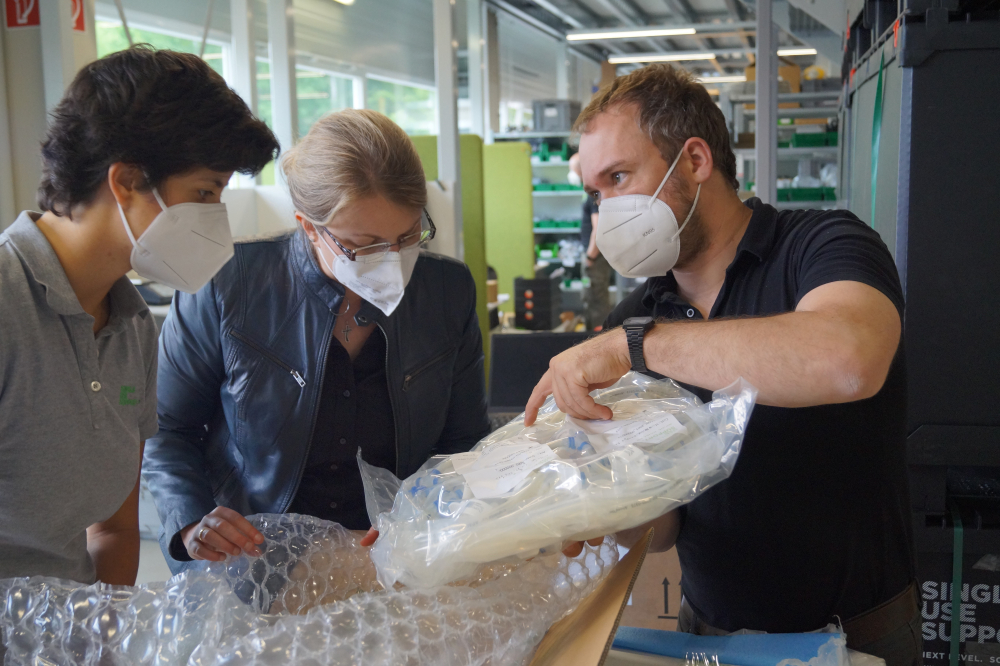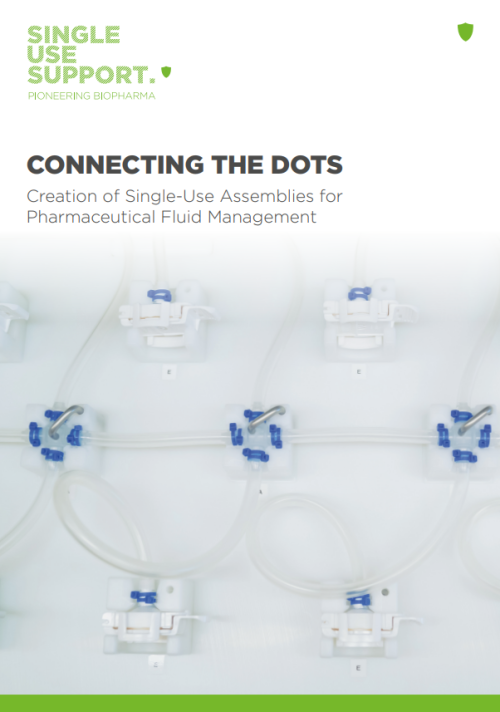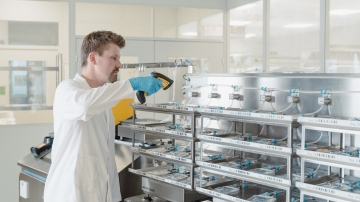Interview: Considerations for Sterilization of single-use assemblies
Table of contents
ShowDavid Seifert is Teamlead of Sales Application Engineering of Single-Use Assemblies at Single Use Support. As single-use system enthusiast, he has led several projects to deliver single-use assemblies. Sometimes within only 16 days – from drawing to sending sterilized manifolds. Working closely with various biomanufacturers he strives to provide the industry with advanced fluid management to enhance patient safety. In this interview he gives insights into the field of single-use sterilization technology.
When are single-use assemblies sterilized?
Single-use assemblies are typically sterilized at different stages depending on the specific requirements of the customer's operating environment and the need to produce a sterile product. Contamination poses a significant threat and risk to any manufacturer, impacting the effectiveness of the process and the overall safety. Therefore, the production of sterile products is always necessary and expected.
We supply single-use assemblies for various grades, including D, C, B, and A, ensuring they are manufactured in the most secure environment possible. The sterility requirements may vary throughout the process, with the highest degree of sterility necessary for the final drug product. For example, low bioburden levels are crucial to maintain sterility.


Contamination poses a significant threat and risk to any manufacturer, impacting the effectiveness of the process and the overall safety.
David SeifertWhat are typical types of sterilization for single-use assemblies?
You can distinguish between two overall types of sterilization methods used for single-use assemblies.
- Irradiation methods, such as Gamma, X-ray, and E-beam (beta), are commonly employed for sterilizing single-use assemblies. These methods utilize radiation to effectively eliminate microorganisms and achieve sterilization. Both e-beam and gamma irradiation operate at the molecular level, but the difference lies in the mechanism: e-beam sterilization involves electron bombardment, while gamma irradiation utilizes cobalt or other radioactive materials.
- Heat/temperature sterilization options for single-use assemblies include autoclave sterilization, which involves subjecting the assemblies to high temperatures ranging from 121-138°C under pressure, and depyrogenation, a process where the assemblies are exposed to elevated temperatures ranging from 180-400°C to remove pyrogens.
These sterilization techniques ensure the necessary level of sterility and safety for single-use assemblies, making them suitable for various applications where a sterile environment or production of sterile products is required.
What advantages does gamma irradiation have - as most used sterilization technique for single-use assemblies, compared to other sterilization methods?
When comparing irradiation methods, such as gamma irradiation, to heat sterilization, such as autoclaving, several advantages can be observed, especially in the context of single-use assemblies used in the pharmaceutical industry.
In addition to the process simplicity of irradiation methods, gamma irradiation offers distinct advantages for closed systems when using polymers, silicones, and elastomers in pharmaceutical applications. Single-use assemblies are often designed as closed systems with specific geometries that do not retain moisture. Gamma irradiation provides a straightforward sterilization process compared to the complexities of steam and heat used in autoclaving. Another advantage is the minimal surface structure alteration. Gamma irradiation has a minimal impact on the surface structure of the materials. This leads to reduced formation of extractables and leachables that can migrate from the assembly materials into the product.

Gamma irradiation is generally a versatile method that can be applied to various single-use assemblies.
David SeifertAnd why gamma as the most prominent technique within the irradiation methods? Well gamma irradiation specifically offers the following advantages over x-ray and ebeam.
First, it provides a deep material penetration: Gamma radiation with cobalt can penetrate deeper into materials compared to other methods such as e-beam sterilization with beta waves. Second, gamma irradiation is well-established and widely accepted. You don’t just change a running system without a good reason. Using gamma irradiation eliminates the need for additional validation that may be required for alternative methods like e-beam sterilization.
You can say that gamma irradiation is generally a versatile method that can be applied to various single-use assemblies. However, there may be instances where certain components, such as filters, are not compatible with gamma irradiation and require alternative sterilization methods.

What must be considered while choosing sterilization methods?
A lot of aspects and consideration should be taken into account, when choosing sterilization methods for single-use assemblies.
We start with defining customer expectations and validations. It is imperative to understand the specific requirements and expectations of the customer and ensure that the chosen sterilization method aligns with their needs. We then consider the validation requirements for the components to ensure that they remain functional after sterilization.
Also, it is important, of course, to guarantee compatibility with configurations. We verify that the assembly's configuration is compatible with the chosen sterilization method. For example, certain components like a 2-meter-long tube may not be suitable for autoclaving.
We then check the method-assembly compatibility, where we ensure that the method chosen for sterilization aligns with the design and materials used in the assembly. Each method has its limitations and specific considerations.
Finally, the logistics of sterilization must also be considered. More precisely, the logistics and practical implementation of the chosen sterilization method. We make sure that it can be effectively applied.
At Single Use Support, we take over all these services for our customers from a single source, clarify all validations and compatibilities and create a ready-to-use assembly.
Future considerations: What type of sterilization will be leading in the future?
Gamma irradiation is currently in high demand. However, it comes with longer lead times and associated costs due to supply challenges and availability. Therefore, the logistical inconvenience may drive the exploration and adoption of alternative sterilization methods.
There is potential for x-ray sterilization to become a leading sterilization method in the future. It offers potential advantages such as simplified logistics and faster turnaround times which accelerates and soothes the process. First guides to implement x-ray sterilization are already published. More and more companies validate and explore the use of x-ray sterilization, and it will be exciting to see if x-ray sterilization will replace gamma sterilization as the leading method.

IRIS Single-Use Assemblies
Whitepaper: Connecting the Dots
Creation of Single-Use Assemblies for Pharmaceutical Fluid Management








